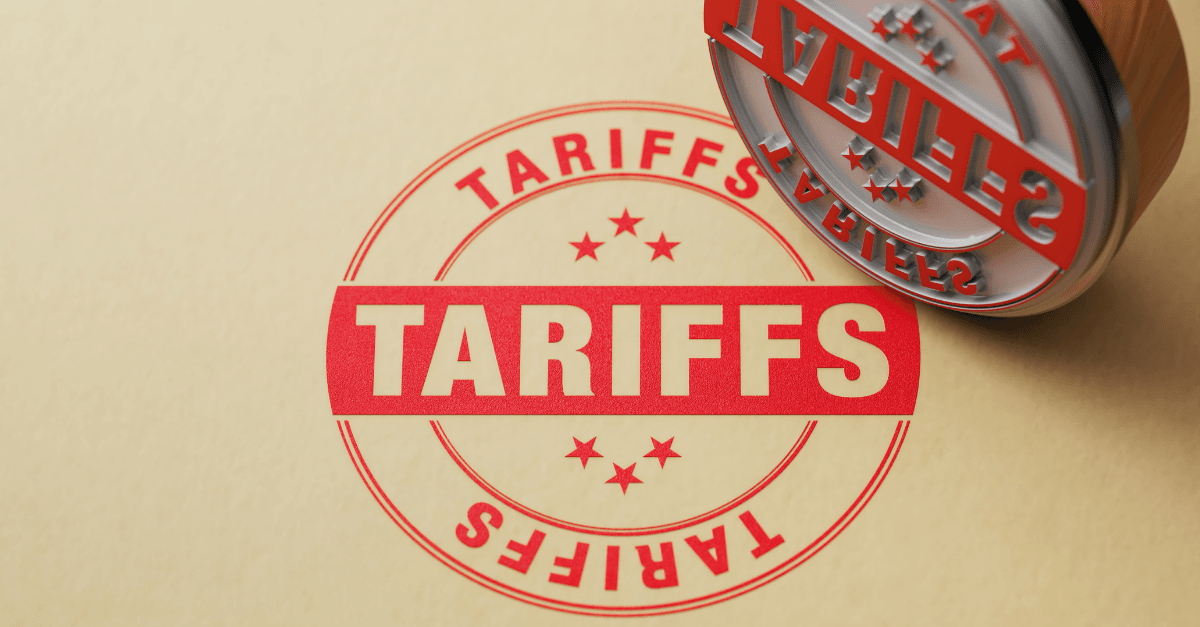Resource Type: Blogs
Tag: Fulfilment
BLOG
Canada’s Retaliatory Tariffs: Strategic Implications for U.S. Exporters
The United States and Canadian governments have been engaged in a tariff-based trade dispute since November 2024, when President Trump first imposed a 25 percent import tariff on all Canadian and Mexican imports.
This article explores the strategic and economic implications of the recent repeal of Canada’s retaliatory tariffs on U.S.-origin goods, examining how this shift impacts cross-border commerce, ecommerce exporters, and logistics operators.
October 15, 2025


Resource Type: Blogs
BLOG
Canada’s Retaliatory Tariffs: Strategic Implications for U.S. Exporters
The United States and Canadian governments have been engaged in a tariff-based trade dispute since November 2024, when President Trump first imposed a 25 percent import tariff on all Canadian and Mexican imports.
This article explores the strategic and economic implications of the recent repeal of Canada’s retaliatory tariffs on U.S.-origin goods, examining how this shift impacts cross-border commerce, ecommerce exporters, and logistics operators.
October 15, 2025
Background: A Year of Tariff Tensions
Many industries were caught in the middle of the tariff war, including ecommerce providers, distributors, and Canadian retailers. A key pressure point was the 25 percent retaliatory surtax introduced by the Canadian government in March 2025, affecting a broad range of consumer goods, notably within the beauty, wellness, and consumer packaged goods (CPG) sectors.
This surtax increased import costs for U.S. manufactured products, straining supply chains and raising prices for Canadian consumers.
The Repeal: A Step Toward Trade Stability
In a major move toward de-escalating trade tensions, the Canadian government repealed most of its retaliatory tariffs effective 1 September 2025. The repeal applies to U.S.-origin goods that comply with Country of Origin (COO) requirements, typically determined by where a product is manufactured or substantially transformed.
Some tariffs remain in place, particularly for steel, aluminium, and automotive products, to mirror ongoing U.S. trade restrictions. However, the removal of the majority of tariffs represents a substantial relief for exporters, importers, and cross-border businesses.
Implications for Businesses Selling to Canada
1. Renewed Market Access and Competitiveness
The elimination of the 25 percent surtax restores price competitiveness for U.S. exporters. Canadian buyers who previously turned to alternative suppliers or domestic sources may now return to U.S. brands, especially where quality, reliability, and brand equity matter most.
For cross-border ecommerce brands, this marks a vital opportunity to re-engage Canadian consumers, rebuild market share, and stimulate sales growth.
2. Customs and Compliance Adjustments
With the tariff repeal, businesses must review and update customs processes to maintain compliance under the United States–Mexico–Canada Agreement (USMCA):
- Verify that products satisfy Country of Origin (COO) rules.
- Review tariff classification codes, import documentation, and supply chain records.
- Assess whether financial securities or customs bonds posted during the surtax period can be refunded or reduced.
Companies should consult customs brokers or trade compliance experts to confirm eligibility for duty-free access under Canada Border Services Agency (CBSA) regulations.
3. Refund Opportunities and Retroactive Relief
Although the repeal is forward-looking, certain provisions may allow taxpayers and importers to seek refunds or retroactive tariff adjustments. However, most ecommerce goods will not
What This Means for Cross-Border Commerce
The removal of retaliatory tariffs marks a welcome shift for cross-border commerce, yet the trade environment remains more complex than before 2024.
For U.S. exporters and ecommerce sellers, this is the time to:
- Re-engage with Canadian buyers
- Optimise logistics and fulfilment networks
- Review Incoterms and contract terms
- Prepare for regulatory changes expected in 2026
THG Fulfil’s Perspective
THG Fulfil continues to monitor international trade developments closely, supporting global brands and enterprise clients in navigating customs, compliance, and cross-border fulfilment challenges.
Our end-to-end ecommerce solutions enable brands to:
- Optimise pricing and distribution strategies
- Manage cross-border logistics efficiently
- Enhance customer experience across global markets
The Canadian market remains a key growth area, and THG Fulfil is working with partners to help brands capitalise on new trade opportunities in this post-tariff environment.